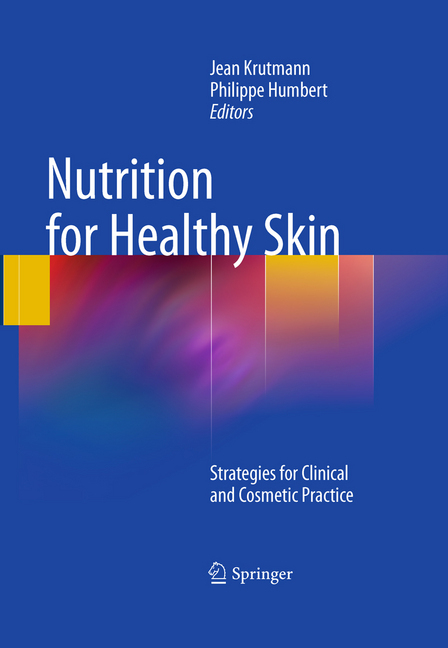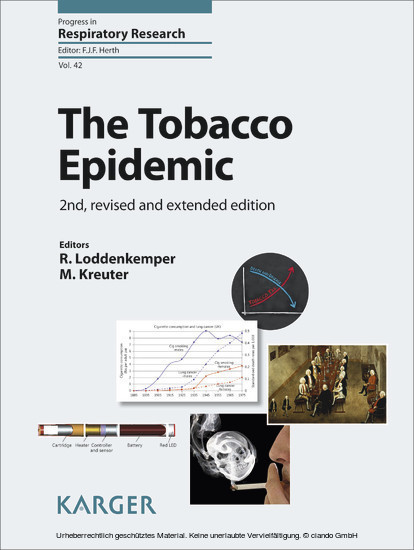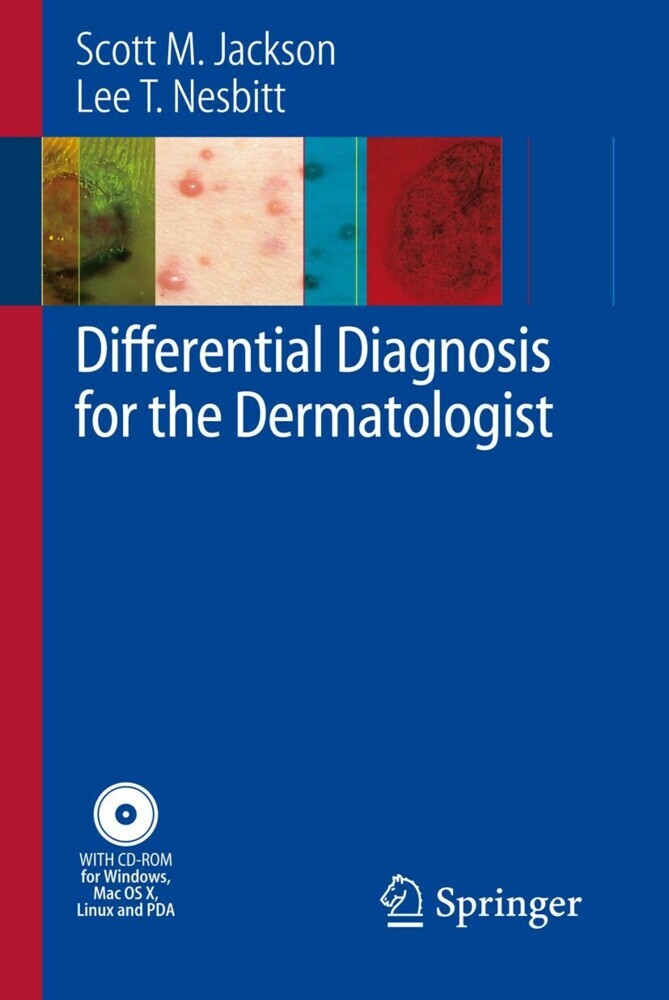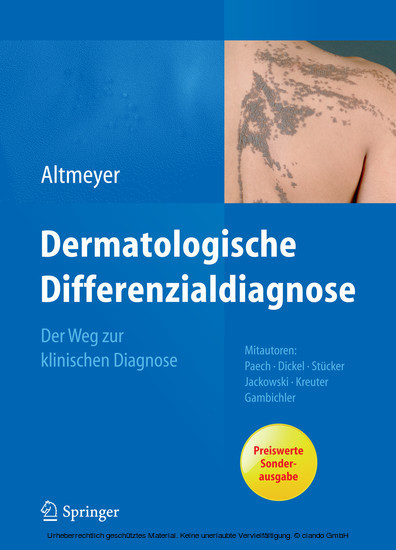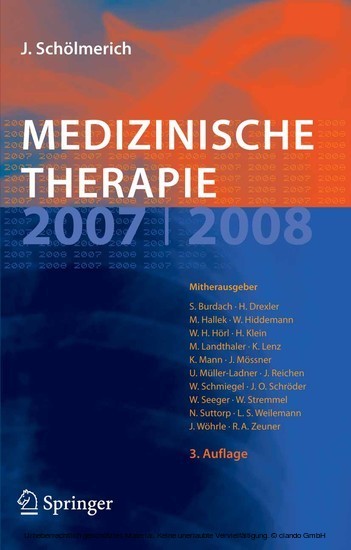Nutrition for Healthy Skin
Strategies for Clinical and Cosmetic Practice
Nutrition for Healthy Skin
Strategies for Clinical and Cosmetic Practice
This extraordinary reference describes the scientific basis, summarizes the existing evidence that functional food for skin really works, and addresses the key questions asked by dermatologists and patients when it comes to practical aspects of nutrition based strategies in clinical and cosmetical dermatology. It is believed that this helpful guide will become the golden standard, the 'bible' for this given topic, which will be used by dermatologists, industry people and interested patients.
Jean Krutmann is Professor of Dermatology and Environmental Medicine and Director of the Institut für Umweltmedizinische Forschung (Institute for Environmental Medical Research) at the Heinrich Heine University, Düsseldorf. His field of research is dermatotoxicology and immunodermatology, with special emphasis on environmentally induced skin diseases. He is author or co-author of more than 200 papers and the recipient of various awards. Professor Philippe Humbert is Head of the Dermatology Department at Besançon University Hospital Center and manager of the center's Skin Engineering and Biology Laboratory. He is also Vice President of the French Society of Dermatology and Chairman of the International Society for Biophysics and Imaging of the Skin. Professor Humbert has an impressive publication record on a range of topics in dermatology.
Jean Krutmann is Professor of Dermatology and Environmental Medicine and Director of the Institut für Umweltmedizinische Forschung (Institute for Environmental Medical Research) at the Heinrich Heine University, Düsseldorf. His field of research is dermatotoxicology and immunodermatology, with special emphasis on environmentally induced skin diseases. He is author or co-author of more than 200 papers and the recipient of various awards. Professor Philippe Humbert is Head of the Dermatology Department at Besançon University Hospital Center and manager of the center's Skin Engineering and Biology Laboratory. He is also Vice President of the French Society of Dermatology and Chairman of the International Society for Biophysics and Imaging of the Skin. Professor Humbert has an impressive publication record on a range of topics in dermatology.
1;Foreword;5 2;Preface;6 3;Contents;7 4;Part I Nutrition and Skin: The Scientific Basis;9 4.1;1: Cutaneous Changes in Nutritional Diseases;10 4.1.1;1.1 Nutritional Deficiencies;10 4.1.1.1;1.1.1 Marasmus and Kwashiorkor;10 4.1.1.2;1.1.2 Essential Fatty Acid Deficiency;12 4.1.1.3;1.1.3 Vitamin Deficiencies;12 4.1.1.4;1.1.4 Trace Element Deficiencies;15 4.1.2;1.2 Excess Nutrition;17 4.1.2.1;1.2.1 Obesity;17 4.1.2.2;1.2.2 Hypervitaminoses;17 4.1.2.3;1.2.3 Trace Element Deposition;18 4.1.3;1.3 Abnormalities of Amino Acid Metabolism;18 4.1.4;1.4 Nutrition, Skin Physiology, and Skin Pathology;19 4.1.5;References;19 4.2; 2: Skin Aging;21 4.2.1;Core Messages;21 4.2.2;2.1 Introduction;21 4.2.3;2.2 Mechanisms of UV-Induced Photoaging;23 4.2.4;2.3 Mitochondrial DNA Mutations and Photoaging;23 4.2.5;2.4 Connective-Tissue Alterations in Photoaging: The Role of Matrix Metalloproteinases and Collagen Synthesis;25 4.2.6;2.5 UV-Induced Modulation of Vascularization;26 4.2.7;2.6 Photoaging as a Chronic Inflammatory Process;27 4.2.8;2.7 Protein Oxidation and Photoaging;27 4.2.9;2.8 Infrared a Radiation-Induced Retrograde Signaling;27 4.2.10;2.9 Concluding Remarks: The Defective Powerhouse Model of Photoaging of Human Skin;28 4.2.11;References;29 4.3;3: Non-melanoma Skin Cancer;31 4.3.1;Core Messages;31 4.3.2;3.1 General Overview;31 4.3.2.1;3.1.1 Skin Carcinogenesis;31 4.3.2.2;3.1.2 Protective Mechanisms of Carcinogenesis;32 4.3.2.3;3.1.3 Carcinogens of the Skin;32 4.3.3;3.2 Different Types of Non-melanoma Skin Cancer;33 4.3.3.1;3.2.1 Seborrheic Keratosis;33 4.3.3.2;3.2.2 Clear Cell Acanthoma;34 4.3.3.3;3.2.3 Dyskeratoma (Syn. "Warty Dyskeratoma");34 4.3.3.4;3.2.4 Actinic Keratoses;34 4.3.3.5;3.2.5 Bowen's Disease [6];34 4.3.3.6;3.2.6 Bowenoid Papulosis;34 4.3.3.7;3.2.7 Erythroplasia;35 4.3.3.8;3.2.8 Squamous Cell Cancer;35 4.3.3.9;3.2.9 Keratoacanthoma;35 4.3.3.10;3.2.10 Basal Cell Carcinoma;36 4.3.3.10.1;3.2.10.1 Clinical Subtypes;37 4.3.3.11;3.2.11 Prevention of UV-Induced Skin Cancer;37 4.3.3.12;3.2.12 Treatment of Non-melanoma Skin Cancer [11, 18, 21];37 4.3.3.12.1;3.2.12.1 Surgical Methods;38 4.3.3.12.2;Take Home Pearls;38 4.3.4;References;38 4.4;4: Skin Barrier Function;40 4.4.1;Core Messages;40 4.4.2;4.1 Overview of Barrier Function in Normal Skin;41 4.4.2.1;4.1.1 Cutaneous Barrier Function;41 4.4.2.2;4.1.2 Co-regulation and Interdependence of Permeability Barrier and Antimicrobial Defense;42 4.4.2.3;4.1.3 Stratum Corneum as a Dynamic Sensory Interface;43 4.4.2.4;4.1.4 External Stressors Alter Permeability Barrier Function;43 4.4.2.5;4.1.5 Sources, Function, and Pathophysiology of Stratum Corneum Acidification;44 4.4.2.5.1;4.1.5.1 Endogenous Sources of Stratum Corneum Acidification;44 4.4.2.5.2;4.1.5.2 Role of pH in Regulating Function;44 4.4.2.5.3;4.1.5.3 Pathophysiology of an Elevated Stratum Corneum pH;45 4.4.2.6;4.1.6 Permeability Barrier Function in Relation to Pigmentation;45 4.4.2.6.1;4.1.6.1 Enhanced Barrier Function in Darkly Pigmented Skin;45 4.4.2.6.2;4.1.6.2 Enhanced Epidermal Function of Darkly Pigmented Skin Correlates with a Lower SC pH;46 4.4.2.6.3;4.1.6.3 Lower pH of Melanocyte Dendrites Could Account for Lower pH of Pigmented Skin;46 4.4.3;4.2 Barrier Failure in Atopic Dermatitis;47 4.4.4;4.3 Basis for Abnormal Barrier Function in Atopic Dermatitis;48 4.4.4.1;4.3.1 Inherited Abnormalities;48 4.4.4.2;4.3.2 Acquired Stressors Could Further Aggravate Barrier Function in AD;49 4.4.5;4.4 "Outside-Inside," Then Back to "Outside" Pathogenic Mechanism in AD;49 4.4.6;4.5 A Potential New Therapeutic Paradigm for AD;50 4.4.7;References;51 5;Part II Functional Food for Skin Works: Intervention Studies in Humans and Animal Models;54 5.1;5: Botanical Antioxidants for Skin Protection: An Overview;55 5.1.1;Core Messages;55 5.1.2;5.1 Introduction;55 5.1.3;5.2 Green Tea/EGCG;56 5.1.4;5.3 Pomegranate;58 5.1.5;5.4 Resveratrol;59 5.1.6;5.5 Silymarin;60 5.1.7;5.6 Genistein;61 5.1.8;5.7 Curcumin;61 5.1.9;5.8 Sulforaphane;62 5.1.10;5.9 Lycopene;
Krutmann, Jean
Humbert, Philippe
| ISBN | 9783642122644 |
|---|---|
| Artikelnummer | 9783642122644 |
| Medientyp | E-Book - PDF |
| Auflage | 2. Aufl. |
| Copyrightjahr | 2010 |
| Verlag | Springer-Verlag |
| Umfang | 208 Seiten |
| Sprache | Englisch |
| Kopierschutz | Digitales Wasserzeichen |

